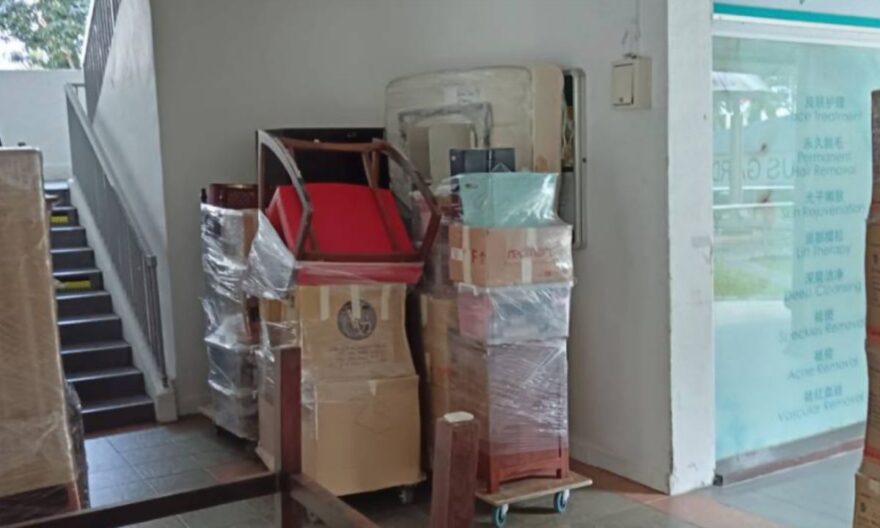
How to Protect Your Office Furniture During a Move
Moving office furniture can be a challenging task, especially when aiming to protect it from damage. Ensuring your valuable assets arrive safely at the new location requires careful planning and the right strategies. From selecting the appropriate packing materials to using effective packing techniques, each step plays a crucial role in safeguarding your furniture. A well-organised move not only prevents damage but also saves time and money in the long run.
Furthermore, working with a reliable office moving services Singapore adds an extra layer of security, providing expertise and proper handling of your items. However, it is essential to prepare adequately by making an inventory, labelling items, and communicating clearly with the movers. Additionally, understanding how to load and unload the truck properly can significantly reduce the risk of damage during transit.
By following a structured approach, you can minimise stress and ensure a smooth transition to your new office space. Thus, this guide will provide you with comprehensive tips and techniques to protect your office furniture during a move, ensuring everything arrives intact and ready for use.
Planning Ahead
Planning is the first step in protecting your office furniture during a move. Moreover, proper planning reduces stress and ensures everything goes smoothly.
Create a Moving Plan
List all tasks to be done.
Assign deadlines for each task.
Keep a checklist to track progress.
Plan early to avoid last-minute rushes.
Inventory of Office Furniture
List all items to be moved.
Note the condition of each item.
Identify fragile and valuable items.
Use this inventory to keep track during the move.
Choosing the Right Moving Company
Research moving companies.
Read reviews and ask for recommendations.
Get quotes from multiple companies.
Choose a company experienced in moving office furniture.
Ensure the company offers insurance for your items.
Planning ahead involves creating a detailed moving plan, taking inventory, and selecting office moving services Singapore. Additionally, each step is vital for a smooth and safe move.
Packing Materials
Selecting the right packing materials is essential. Additionally, proper materials protect your furniture from damage during the move.
Essential Packing Supplies
Boxes
Use sturdy boxes of various sizes.
Ensure they can hold the weight of your items.
Bubble Wrap
Protects fragile items.
Wrap each item individually.
Packing Paper
Use to fill empty spaces in boxes.
Prevents items from shifting during the move.
Furniture Pads and Blankets
Cover large items to prevent scratches and dents.
Packing Tape
Secure boxes and wrapping materials.
Use strong, durable tape.
Labels and Markers
Label each box with its contents.
Use markers to write on the labels.
Choosing the right packing supplies involves using sturdy boxes, bubble wrap, packing paper, furniture pads, and secure tape. Additionally, labelling everything ensures organised and efficient unpacking.
Tips for Choosing the Best Packing Materials
Choosing the right materials can make a big difference in protecting your furniture.
Quality Over Quantity
Invest in high-quality packing materials.
Better quality means better protection.
Avoid using old or damaged boxes.
Right Size and Type
Use boxes that fit your items well.
Do not overpack or underpack.
Use specialty boxes for items like computers and electronics.
Protective Materials
Use bubble wrap and packing paper generously.
Ensure fragile items are well cushioned.
Double-wrap items that are very delicate.
Environmental Considerations
Additionally, use eco-friendly packing materials.
Therefore, recycle boxes and packing materials after the move.
Therefore, choosing the best packing materials involves prioritising quality, selecting the right sizes, and considering environmental factors. So, using protective materials generously ensures your items remain safe during the move.
Packing Techniques
Proper packing techniques are crucial to protect your office furniture during a move. Furthermore, follow these tips to ensure everything arrives safely.
Disassembling Furniture
Take apart large items like desks and bookshelves.
Keep screws and small parts in labelled bags.
Moreover, this makes items easier to move and reduces the risk of damage.
Protecting Fragile Items
Wrap fragile items like glass and electronics in bubble wrap.
Use packing paper to fill gaps and prevent shifting.
Place these items in sturdy boxes for extra protection.
Using Padding and Covers
Cover furniture with furniture pads or blankets.
Secure the covers with packing tape.
Thus, this prevents scratches and dents during the move.
Disassembling furniture, protecting fragile items, and using padding are essential packing techniques. In addition, these steps ensure your furniture stays safe during the move.
Loading and Transportation
Loading and transporting your furniture properly is essential to avoid damage. Therefore, follow these best practices for a smooth move.
Best Practices for Loading Furniture
Load heavy items first to create a stable base.
Furthermore, place lighter items on top of heavier ones.
Use straps to secure items in the truck.
Securing Items in the Moving Truck
Use ropes or straps to keep items in place.
Ensure there is no movement during transit.
This prevents items from shifting and getting damaged.
Loading heavy items first and securing everything in the truck are crucial for a safe move. Thus, these steps help protect your furniture from damage during transportation. On the other hand, you can hire professional furniture movers in Singapore to get a peace of mind solution.
Unloading and Unpacking
Once you arrive at your new office, unloading and unpacking your furniture safely is just as important. So, follow these steps to ensure everything goes smoothly.
Safe Unloading Techniques
Unload heavy items first to maintain stability.
In addition, use a dolly or cart to move large items.
Therefore, get help if needed to avoid injuries.
Reassembling Furniture
Follow the instructions to reassemble items.
Use the labelled bags of screws and parts.
Additionally, take your time to ensure everything is put together correctly.
Inspecting for Damage
Therefore, check each item for any damage.
Note any issues and contact your moving company if needed.
Document any damage with photos.
Safe unloading techniques, careful reassembly, and thorough inspection are vital steps. Additionally, these ensure your furniture is ready for use in your new office.
Additional Tips
Here are some extra tips to make your office move even smoother.
Labelling and Organising
Label each box with its contents and destination room.
Organise boxes by category to make unpacking easier.
Communicating with Movers
Clearly communicate your expectations to the furniture movers Singapore.
Provide any special instructions for fragile or valuable items.
Addressing Potential Issues
Have a plan in case of delays or problems.
Keep a list of important contacts, like the moving company and building manager.
Labelling, organising, clear communication, and addressing potential issues are additional steps. Hence, these can significantly enhance your moving experience.
Bottom Line
However, protecting your office furniture during a move requires meticulous planning, the right packing materials, and proper techniques. First, assess the type and condition of your furniture to determine the necessary packing supplies, such as bubble wrap, furniture blankets, and sturdy boxes. Next, disassemble larger pieces if possible, labelling each part for easy reassembly. Use padding to protect surfaces from scratches and damage. Additionally, reinforce boxes and secure all items with strong tape.
Communicate clearly with your moving team, providing instructions on handling fragile or valuable items. By following these steps, you can ensure your furniture arrives safely and is ready for use in your new office, making the moving process smoother and more efficient.So, Plan ahead, pack carefully, and maintain open communication to protect your valuable office assets.




